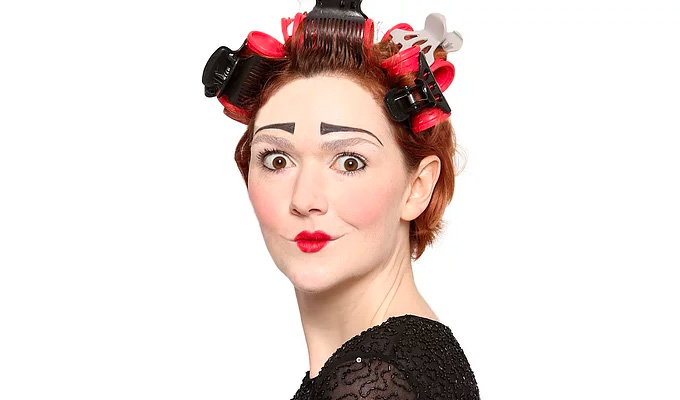The sitcom that killed the sitcom
Liam Mullan explains how Seinfeld changed everything
Curb Your Enthusiasm’s seventh season has a running storyline in which Larry David attempts to woo back his wife Cheryl by orchestrating a cast reunion of Seinfeld, the show that made David the rich, aimless wanderer as portrayed in Curb.
For the most part, Curb Larry has spent his time wrestling with the minutiae of Los Angeles etiquette and explaining away bizarre actions as varied as hiring a prostitute in order to use the car-pool lane to complimenting a father on the size of his young son’s penis. It seems fitting that the Seinfeld reunion so often demanded since the controversial finale more than a decade ago has occurred as a show-within-a-show. Jerry Seinfeld and the rest of the cast merely play supporting roles to the man who had run the original sitcom from behind the scenes for most of its nine-year existence.
As the screen David attempts to convince Jerry of the artistic merits of the reunion, Jerry notes that this pitch is unlike David’s usually high standards, noting David’s previous disdain for lesser shows that didn’t match his ‘aesthetic principles’.
While Cheers! proudly reminded viewers that it was ‘filmed before a live studio audience’, David seemed to take no pride in the fact that Seinfeld was. While Seinfeld had used the traditional three-walled sets and three-camera set-up it was against David’s initial wishes. Often during Seinfeld, television in general, and sitcom in particular, is dismissed by the characters as almost entirely without merit. The values David held so dearly for the show can be seen from the start in how the premise, filming and writing removed the accepted requirements of courting the studio audience, the need for characters to have strong bonds and the use of an emotional sucker-punch towards the end of an episode.
Seinfeld’s initial idea challenged the sitcom norm as the characters weren’t being placed in an instantly recognisable situation for a situation comedy. Not a family, a workplace or a close collection of friends or neighbours. Instead Seinfeld was a premise-led show and the premise was simply: ‘Where does a stand-up comedian draw inspiration from?’
After a halting start with low ratings, both in viewers and test screening scores, the show began to build a following. Michael Richards’ Kramer became the first breakout star; his trademark sliding entrances started to be greeted with loud cheers from the audience. While contemporary shows like Married With Children encouraged each character’s entrance be met with whoops and cheers, David, hating the interruption to the action and unnatural stance of the actors waiting for quiet, demanded the applause be stopped.
As the series continued, Jerry’s stand-up segments decreased in frequency. They initially acted as a Greek chorus as an episode progressed, then as bookends and finally were eliminated all together. Seinfeld was never ‘a show about nothing’, its usual sobriquet, as each episode was essentially four stories running in parallel. At the start of each episode all four characters were sent off like spinning tops, occasionally colliding but essentially travelling their own path till they all collapse at the end. David would have episodes be built around something as simplistic as being lost in a car park, waiting for a table at a restaurant or visiting a car dealership with each of the characters carrying their own personal story to a logical conclusion as derived from the situation instead of being forced into it; even when the different strands became entangled towards the end of an episode, the reasoning felt organic.
Seinfeld writers often recall that an episode’s story was born from a personal experience. They seemed to strive for authenticity above all else, which shone through in the writing – even if the truth often seemed more absurd than standard fiction. As a result, real-life incidents formed the basis of classic episodes such as The Soup Nazi and The Contest. In the alternative Seinfeld reality, he and George write a pilot for a sitcom called Jerry where his relationships are replicated on-screen with actors playing George, Elaine and Kramer. Whereas David and Jerry trusted their instincts, George and Jerry quickly surrender to network demands, creating a convoluted ‘Jerry gets a butler through court order’ storyline that has no ring of truth. Jerry is not commissioned for a full series.
Conversely, the dismissal of sitcom conventions allowed more surreal flights of fancy as the show went on. If the audience accepted the artifice of the staging it would also accept bizarre events – steps that most sitcoms dare not take due to beliefs in realism, despite having already abandoned naturalism in their setting.rn rnExemplifying the ‘no hugs, no learning’ creed, the key characters didn’t particularly care for one another and only stayed together as no one else would tolerate them for long. George was a high school friend who Jerry seems to have kept in contact with solely for confirming his constant superiority over someone else. Kramer was simply Jerry’s neighbour who forces his presence on Jerry and others through sheer ignorance of social convention. Elaine was Jerry’s former girlfriend in a relationship that seems an exception since all other dalliances for both rarely lasted more than one episode. The usual will they-won’t they romances is parodied over the years, with a suggestion in the finale of the expected declarations of true love being quickly quashed.
Seinfeld resisted the redemptive tendencies of American comedy and had four characters who seem to revel in the misery of those around them and make no attempt to amend or admit to their own faults. These are characters who will refuse to resuscitate a man on grounds of personal discomfort, shove women and children out of the way to escape a burning house, kidnap a neighbour’s dog for being too loud and tell a woman they need a nose job.
Every convention and rule of the sitcom was broken, ignored, ridiculed or worked around. David and Jerry were essentially a perfect blend of bloody-minded stubbornness and cool diplomacy. The stories of David walking off-stage within moments of his stand-up sets, berating the audience as he left, suggested he was a comedian who never particularly felt the need for validation from a group of strangers. The filtering of David’s intentions through the voice of Jerry and others led to an air of subversion.
That subversion was finally exposed in the series’ finale, one of the most-watched television events of all time and written by a returning David who had left two seasons earlier. Again, instead of going the tried and tested way of emotional goodbyes, tear-jerking sentimentality and general self-congratulation, David knew better. He was aware that, as loved as the show was, the characters were unlovable and over the previous nine seasons had left a wealth of emotionally broken and morally disgusted people in their wake. These four didn’t deserve commendation, they deserved condemnation.
Observational humour is even criticised as the cast watched as an obese man was robbed. Instead of intervening, they filmed the event and provided running commentary, mocking the victim whilst they did. That emotional distance that was the trademark of this show about ‘nothing’ is finally concluded to be cowardice and cold-heartedness; the ‘nothing’ of the show perhaps only referring to their lack of humanity. Even as they are sent to prison for their breaking of a Good Samaritan law they accept it with a blasé attitude. Perhaps the audience were being condemned as complicit in their enjoyment of these escapades.
Just as Seinfeld seemed to defy all rules for sitcoms laid down by the network commissioners and executives, those same people in power have learned ‘no lessons’ from the one show that broke all their rules to become the most successful sitcom of all time. Instead, we have continued to get studio audience sitcoms with perfect families, lessons learnt, convoluted stories and obvious meddling from executives and focus groups.
The direct influence of Seinfeld at times seems non-existent. In the first season or so of Friends it was clear that the pitch had been along the lines of ‘Seinfeld with the cast of Melrose Place and plenty of hugs’ but that show eventually found its own voice. Others such as The Drew Carey Show seemed to share some similarities in character dynamic, but generally the argument could be made that little had changed. While some subsequent studio sitcoms have been of decent-to-good quality (Will & Grace, Black Books, 3rd Rock From The Sun) none have the air of a classic that will spoken of in the same revered tones as such predecessors as Frasier, Blackadder or, of course, Seinfeld.
All great sitcoms since Seinfeld, on both sides of the Atlantic, have been single-camera location-shot programmes: The Office, 30 Rock, Peep Show, Arrested Development, Spaced and Curb. The reason might be that, whether conscious of it or not, the creators of those shows know that in its traditional form the sitcom has been perfected.
If it cannot be improved upon, the challenge is to take the genre down different avenues. While Seinfeld cannot claim full credit for showing those possibilities – a portion must be afforded to The Simpsons, It’s Garry Shandling’s Show and The Larry Sanders Show – it did expose the limitations of the existing format. Just as how after The Jazz Singer all subsequent silent films were immediately exposed in their limitations; after Seinfeld all sitcoms made without a fourth wall will seem intentionally obtuse and as hollow as canned laughter.
Published: 21 Oct 2009






